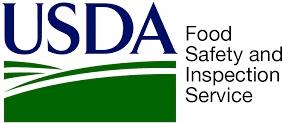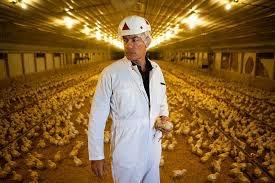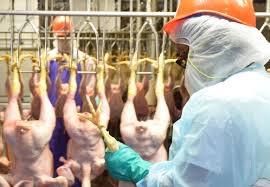 Public advocacy groups including the Center for Science in the Public Interest and spearheaded by Attorney Bill Marler of Marler Clark LLP., are advocating that up to 31 Salmonella serotypes should be declared adulterants. Currently the USDA-FSIS has established maximum levels of Salmonella recovery from carcasses, portions and ground meat without distinguishing among serotypes or considering quantitative levels of contamination.
Public advocacy groups including the Center for Science in the Public Interest and spearheaded by Attorney Bill Marler of Marler Clark LLP., are advocating that up to 31 Salmonella serotypes should be declared adulterants. Currently the USDA-FSIS has established maximum levels of Salmonella recovery from carcasses, portions and ground meat without distinguishing among serotypes or considering quantitative levels of contamination.
Based on statements by secretary of agriculture Tom Vilsack and senior managers in the USDA, the FSIS intends to extend jurisdiction and their involvement back on to farms. The Agency is ill-equipped with respect to personnel and resources to accomplish any meaningful reduction in Salmonella contamination by regulating any single measure or their combination to be applied to live bird production. Declaring 31 strains of Salmonella as adulterants would effectively destroy the broiler industry as we know it. Adopting a policy of banning the sale of poultry products contaminated with any of 31 strains of Salmonella would create a profound shortage of chicken and ground turkey, to the detriment of the industry, its suppliers and consumers.
 In the short term measures currently implemented in plants including chlorination or an alternative bactericidal application by spray or immersion, maintaining scald and chill tank overflow and good processing practices have the potential to further reduce Salmonella contamination. Obviously any investment in labor and equipment responds to the law of diminishing returns with respect to the effort to reduce low levels of contamination. The FSIS has yet to explain how qualitative evaluation of 31 serotypes of Salmonella on chicken and turkey could be achieved within the context of present-day plant volumes and procedures.
In the short term measures currently implemented in plants including chlorination or an alternative bactericidal application by spray or immersion, maintaining scald and chill tank overflow and good processing practices have the potential to further reduce Salmonella contamination. Obviously any investment in labor and equipment responds to the law of diminishing returns with respect to the effort to reduce low levels of contamination. The FSIS has yet to explain how qualitative evaluation of 31 serotypes of Salmonella on chicken and turkey could be achieved within the context of present-day plant volumes and procedures.
The U.S. egg industry has eliminated Salmonella Enteritidis from the production chain by a combination of placing SE negative pullet chicks, maintaining high levels of biosecurity, drag swab surveillance of flocks and above all effective vaccination. Even if SE is transmitted vertically from an infected hen to the egg, the mandated cold chain from packing through to point of sale will suppresses proliferation of the pathogen within the egg. The risk of acquiring SE from commercial egg-producing flocks operating under the FDA Final Rule on Salmonella Prevention is further limited by adequate cooking. Obviously the broiler industry will have to adopt many of the proven modalities currently regarded as a standard procedure in the egg industry. Broiler parent chicks should be delivered from supply hatcheries free of an ever-increasing range of Salmonella serotypes. Parent and grow-out flocks should be raised in housing with concrete floors that allows decontamination between cycles.
 Activist organizations are less concerned over salmonellosis than basically destroying the broiler industry. Although they advocate testing, it is axiomatic that it is impossible to eliminate foodborne infection simply by surveillance. Given the low level of intestinal colonization at the parent and broiler levels the intensity of sampling would be practically and financially untenable. Certainly structured and directed sampling as in the egg industry would be beneficial but only with respect to specific complexes or farms implicated in outbreaks.
Activist organizations are less concerned over salmonellosis than basically destroying the broiler industry. Although they advocate testing, it is axiomatic that it is impossible to eliminate foodborne infection simply by surveillance. Given the low level of intestinal colonization at the parent and broiler levels the intensity of sampling would be practically and financially untenable. Certainly structured and directed sampling as in the egg industry would be beneficial but only with respect to specific complexes or farms implicated in outbreaks.
Only one of the 31 serotypes to be designated as adulterants is vertically transmitted. This implies decontamination of eggs as soon as possible after collection. Although out of favor based on carcinogenicity, effectively applied formalin fumigation decontaminates the surface of shells and markedly reduces the level of Salmonella in commercial broiler progeny. Although gene-deleted, attenuated S.Typhimurium (ST) vaccines can reduce the level of intestinal colonization if administered at the hatchery, there is no broad-spectrum Salmonella vaccine that will be effective against as many as 31 serotypes. The implication that the industry is either negligent or disinclined to apply “vaccination” is therefore unfounded. Individual complexes that fail to meet FSIS Salmonella standards obviously apply ST vaccination along with other biosecurity measures and in-plant procedures including decontamination of transport modules to limit the level of intestinal colonization and feather soiling thereby reducing the quantum of Salmonella entering the plant on flocks.
Considerable research has been performed on treatment of birds within 24-hour of harvest in an attempt to reduce fecal contamination along the E-line. Other measures including acidification of drinking water appear to have little practical benefit on the level of Salmonella recovered from carcasses and parts.
Prevention of Salmonella should be a joint responsibility of integrators and consumers. Investigation of outbreaks of salmonellosis acquired from chicken or turkey confirms the high proportion associated with food from restaurants or institutional kitchens. Although infection occurs in households, the number of those affected is usually so low that even if diagnosed and confirmed by bacteriology, which is infrequent, the number of cases in an outbreak are usually below the level required to be detected and reported through a regional or state diagnostic laboratory to a central data base such as Food Net.
Intensifying efforts to encourage more appropriate handling of chicken to prevent cross-contamination with uncooked foods such as salads would obviously be beneficial in both institutional and household kitchens. Thorough cooking of chicken and turkey products to appropriate temperature effectively eliminates the risk of salmonellosis.
If either consumers or regulators require a zero tolerance for Salmonella contamination in product as consigned from plants, irradiation represents the only effective kill step. Although cobalt60 requires expensive installations and trained personnel, electron beam treatment could serve as effective to eliminate Salmonella, Campylobacter and other potential bacterial pathogens. Electron beam irradiation analogous to an X-ray is relatively inexpensive, is effective for tray- pack portions and IQF products since this source of irradiation has low penetrating power.
If the problem of salmonellosis is to be addressed, it will require a comprehensive approach involving primary breeders, who have made considerable progress in elimination of the pathogen; parent level multiplication including hatcheries, the broiler grow-out stage, processing and food preparation. Simply imposing a blanket ban on product “adulterated” with as many as any of 31 Salmonella serotypes is counterproductive, impractical and fraught with unintended consequences. A wise observer remarked that for every complex problem there is usually a simple single elegant solution that is invariably wrong. Let us not be dragooned in having draconian restrictions imposed. These will in themselves create even greater practical and financial problems than the current burden of poultry-derived salmonellosis.